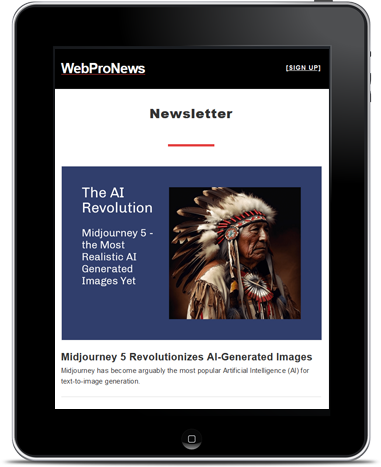The Consumer Packaged Goods (CPG) industry stands at a critical juncture in 2025 as escalating tariffs reshape global trade dynamics, threatening suppl🥃y chains and consumer spending patterns. For leaders of large CPG companies, the stakes have never been higher. The current tariff environment—marked by a 145% U.S. tariff on Chinese☂ imports and China’s retaliatory 125% duties on U.S. goods—underscores a decades-long imbalance in global trade. For years, countries have imposed steep tariffs and restrictions on U.S. exports, eroding America’s industrial and manufacturing base and costing thousands of domestic jobs, often in exchange for cheaper consumer electronics.
Now, with the U.S. taking a stand to demand fairer trade practices, CP🙈G leaders must act decisively to mitigate disruptions, manage costs, and maintain consumer trust. This article explores the tariff landscape’s impact on the CPG sector and outlines actionable strategies to navigate this challenging terrain.
The Tariff Landscape: A Wake-Up Call for CPG Supply Chains
The trade tensions of 2025 are not a sudden ph💯enomenon but a response to long-standing global trade inequities. For decades, U.S. companies faced high tariffs and barriers when exporting to countries like China, while foreign goods entered the U.S. market at lower rates. This imbalance contributed to the decline of American manufacturing, with industries shifting overseas for cost savings—often at the expense of U.S. jobs. The promise of cheaper TVs and computers came at a steep price: a hollowed-out industrial base and diminished economic sovereignty. Today’s tariff hikes aim to level the playing field, but they bring immediate challenges for CPG companies reliant on global supply chains.
Recent developments highlight the severity of the situation. China’s tariffs on U.S. goods have risen from 84% to 125%, while the U.S. has imposed a 145% rate on Chinese imports, creating a ripple effect across industries. For CPG companies, this translates into higher costs for imported ingredients and packaging materials. Spanish olive oi꧋l producers, for instance, are rushing shipments to the U.S. to beat a potential tariff increase from 10% to 25%, with some exploring domestic production as a long-term solution [Web ID: 0]. Meanwhile, beer giant Constellation Brands reports that consumers, wary of inflation, are spending less on cons🦹umables, dining out less, and cutting back on purchases—a trend that directly impacts CPG sales. The Tax Foundation estimates that these tariffs will cost U.S. households an additional $2,100 in 2025, further dampening consumer confidence and spending.
Regional trade agreements add another layer of complexity. Under the United States-Mexico-Canada Agreement (USMCA), compliant goods are tariff-free, but non-compliant goods face a 25% rate, except for energy and potash at 10%. However, the “Buy Canadian” movement is causing U.S. CPG companies to lose shelf space in Canada, a key market, as Canadian retailers prioritize local products in response to trဣade tensions.
The Consumer Impact: A Double-Edged Sword
Tariffs are reshaping consumer behavior in ways that CPG leaders cannot ignore. With inflation fears mounting—consumer confidence dropped to 92.9 in March 2025, the lowest in over four years—U.S. households are stockpiling goods to preempt price hikes. This short-term surge in demand may provide a temporary sales boost, but the long-term outlook is concerning. As costs rise, consumers are tightening budget🏅s, particularly on discretionary CPG products like snacks, beverages, and personal care items. Constellation Brands’ CEO Bill Newlands noted that economic uncertainty is leading to reduced spending on consumer goods, a trend that could persist as tariffs drive up prices.
Posts on X reflect a broader industry concern: large CPG companies are struggling to adapt quickly to these shifts. Smaller competitors are outpacing them by innovating rapidly to meet niche consumer needs, focไusing on value-driven products that resonate with budget-conscious shoppers. Larger firms, bogged down by complex processes and risk-averse cultures, risk losing market share if they cannot pivot with agility. Moreover, actionable consumer data remains a challenge for many CPG brands, limiting their ability to predict and respond to shifting price sensitivities.
Strategic Imperatives for CPG Leaders
To thrive in this tariff-driven landscape, CPG leaders must adopt a multi-pronged approach that balances cost management, supply 🎃chain resilience, and consumer engagement. Here are key strategies to consider:
1. Diversify Supply Chains to Reduce Tariff Exposure
The tariff hikes underscore the risks of over-reliance on a single sourcing region, particularly China. CPG companies must diversify their supply chains to mitigate cost increases and ensure continuity. For example, Spanish olive oil producers are exploring U.S.-based production to avoid tariffs, a model that CPG firms can emulate. Sourcing raw materials from USMCA-compliant countries like Mexico or Canada can also reduce tariff burdens, as compliant goods face no duties under the agreement. Leaders should conduct a thorough supply chain audit to identify high-risk dependencies and explore alternative suppliers in regions with lower or no tꦦariffs, such as Southeast Asia or India, where some industries are already shifting production.
2. Optimize Pricing Without Losing Consumer Trust
With tariffs driving up costs, CPG leaders face a delicate balancing act: ab🌺sorb the increased costs or pass them on to consumers. Absorbing costs may protect market share but erode margins, while price increases risk alienating budget-conscious shoppers. A hybrid approach—str༒ategic price adjustments combined with value-added offerings—can help. For instance, offering smaller pack sizes at lower price points can maintain affordability, while premium products can target less price-sensitive segments. Leveraging data analytics to understand consumer price tolerance is critical, especially since many CPG brands lack accessible, actionable insights in this area. Transparency is also key: communicate price changes honestly, emphasizing efforts to maintain quality and value despite external pressures.
3. Leverage Technology for Supply Chain Agility
Technology can be a game-changer in navigating tariff challenges. Blockchain, already adopted by some CPG firms, offers a way🍃 to ensure supply chain transparency and verify ethical sourcing, which is increasingly important for meeting consumer expectations and regulatory requirements. Advanced analytics and AI can help predict tariff impacts, optimize inventory levels, and identify cost-saving opportunities. For example, logistics providers are offering bonded storage solutions that allow companies to delay tariff payments by storing goods in the U.S. without immediate clearance, providing a buffer against sudden rate hikes. Investing in such technologies can enhance agility, enabling CPG companies to respond swiftly to trade disruptions.
4. Innovate to Meet Evolving Consumer Needs
Smaller CPG players are ga🤡ining ground by quickly adapting to consumer demands for value and sustainability. Large CPG companies must follow suit by accelerating innovation cycles. This could mean reformulating products to use locally sourced ingredients, reducing tariff exposure, or launching new lines that cater to budget-conscious consumers without sacrificing quality. Sustainability initiatives, such as eco-♏friendly packaging, can also resonate with consumers who prioritize ethical brands, even amidst economic uncertainty. Collaboration with R&D teams to fast-track these innovations will be crucial to maintaining competitive relevance.
5. Advocate for Industry-Wide Solutions
While individual strategies are essential, collective action can amplify impact. CPG leaders should collaborate with trade organizations to advocate for tariff exemptions or relief measures, similar to Mexico’s efforts to reduce tariffs on steel and auto exports. Industry-wide initiatives to promote domestic manufacturing can a⛎lso align with the broader goal of fair trade, potentially reducing reliance on imports over time. Engaging with policymakers to highlight the CPG sector’s economic contributions—such as job creation and consumer affordability—can help shape more favorable trade policies.
Looking Ahead: Building Resilience for the Future
The tariff landscape of 2025 is a stark reminder of the vulnerabilities inherent in globalized supply chains. For C𒆙PG leaders, this moment is both a challenge and an opportunity to build more resilient, consumer-centric businesses. By diversifying supply chains, optimizing pricing, leveraging technology, innovating rapidly, and advocating for industry support, large CPG companies can not only weather the current storm but also emerge stronger. The goal of fair trade—correcting decades of imbalances that cost the U.S. its manufacturing backbone—is a worthy one, but it demands adaptability from industry leaders. Those who act decisively now will be best positioned to sustain growth, retain consumer loyalty, and lead the CPG sector into a more balanced and equitable future.




 WebProNews is an iEntry Publication
WebProNews is an iEntry Publication